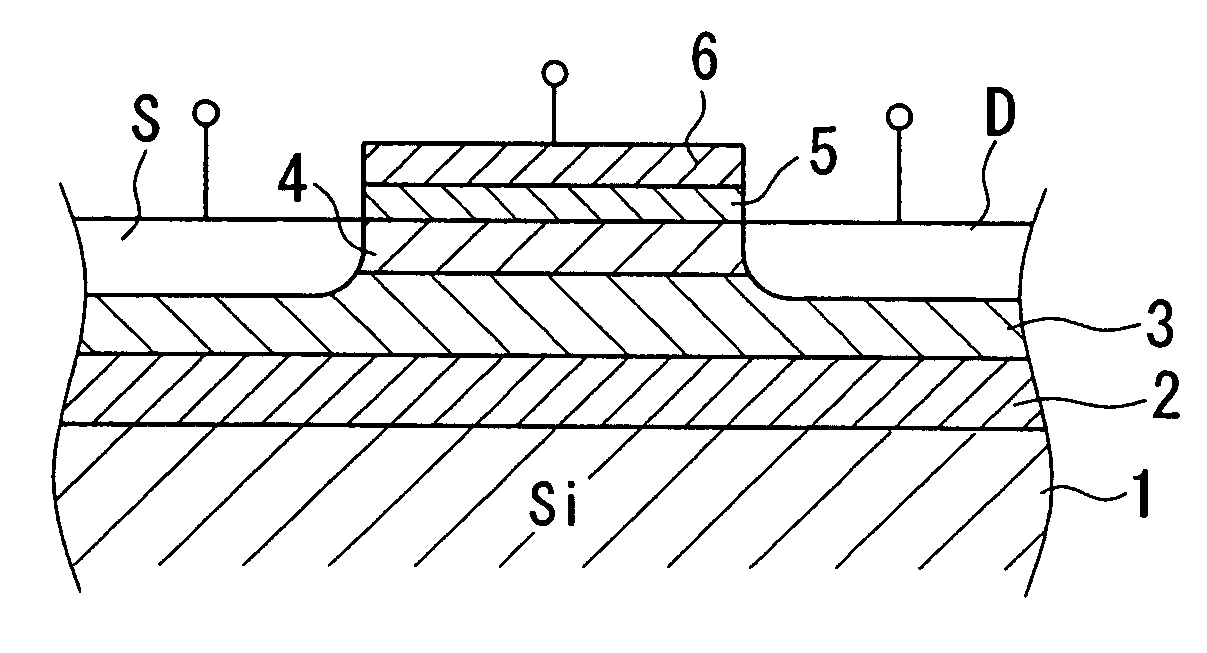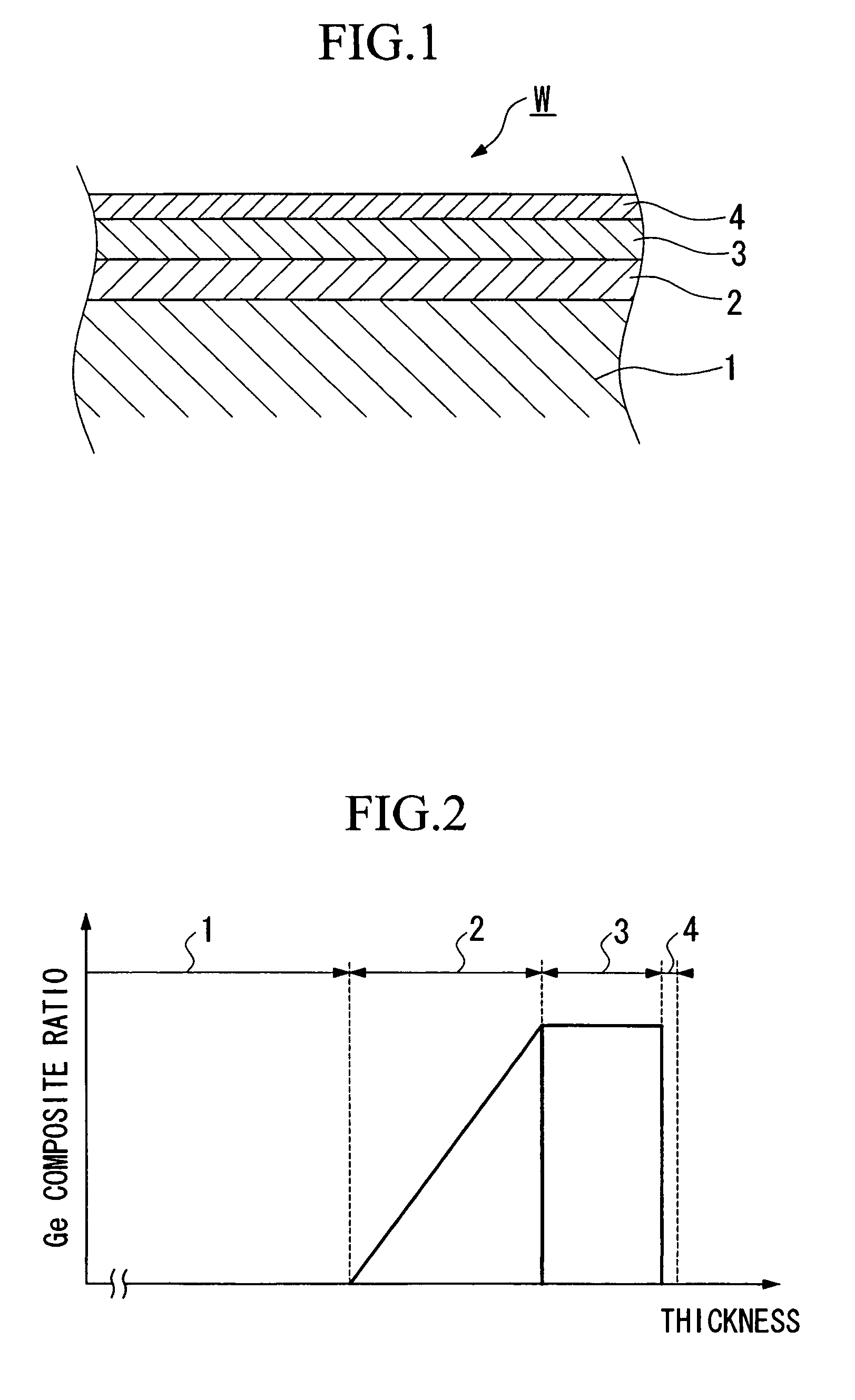Production method for semiconductor substrate and production method for field effect transistor and semiconductor substrate and field effect transistor
a production method and semiconductor technology, applied in the direction of semiconductor devices, electrical devices, basic electric elements, etc., can solve the problems of crystallinity, the surface or interface roughness of the sige layer and the sige layer during heat treatment, and the above examples of the prior art still had the problems described below, and achieve high yield
- Summary
- Abstract
- Description
- Claims
- Application Information
AI Technical Summary
Benefits of technology
Problems solved by technology
Method used
Image
Examples
example
[0044]The following provides a detailed explanation of worsening of surface and interface roughness in the case of heat treatment based on the aforementioned embodiments with reference to FIGS. 5A and 5B and FIGS. 6A and 6B.
[0045]Graphs of surface roughness and the power spectrum of that roughness are shown in FIGS. 5A and 5B, respectively, for the case of performing heat treatment consisting of an annealing temperature of 1000° C. and annealing time of 10 minutes during deposition of the second SiGe layer 3 based on the aforementioned embodiments, and depositing the remaining second SiGe layer 3 after the heat treatment. Furthermore, surface roughness was measured using a Nomarski surface roughness measuring device. In addition, graphs of surface roughness and the power spectrum of that roughness in the case of not performing heat treatment are similarly shown in FIGS. 6A and 6B as a comparative example. In the aforementioned graphs of the power spectra of surface roughness, the wa...
PUM
 Login to View More
Login to View More Abstract
Description
Claims
Application Information
 Login to View More
Login to View More - R&D
- Intellectual Property
- Life Sciences
- Materials
- Tech Scout
- Unparalleled Data Quality
- Higher Quality Content
- 60% Fewer Hallucinations
Browse by: Latest US Patents, China's latest patents, Technical Efficacy Thesaurus, Application Domain, Technology Topic, Popular Technical Reports.
© 2025 PatSnap. All rights reserved.Legal|Privacy policy|Modern Slavery Act Transparency Statement|Sitemap|About US| Contact US: help@patsnap.com



